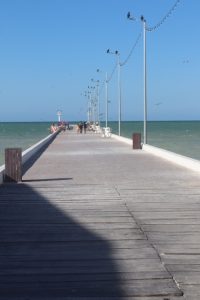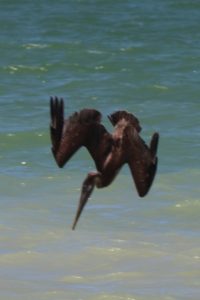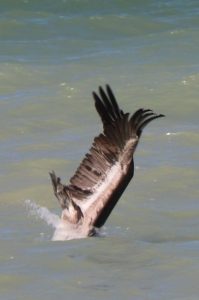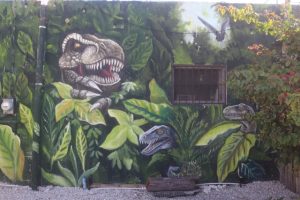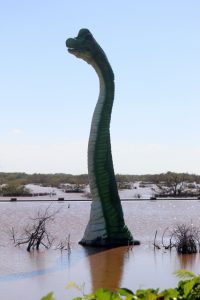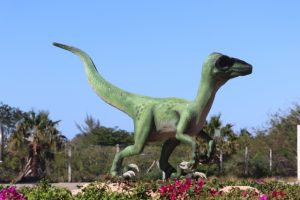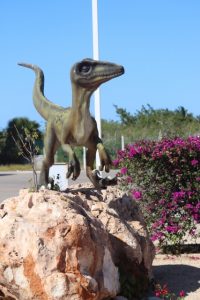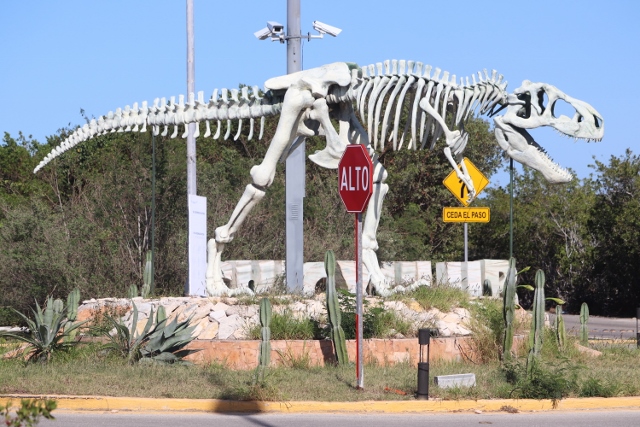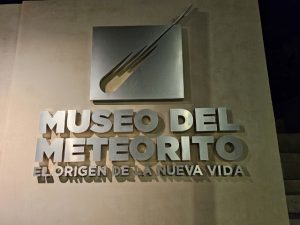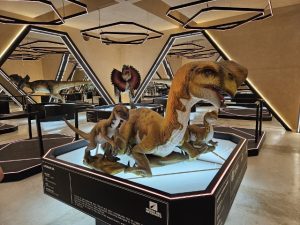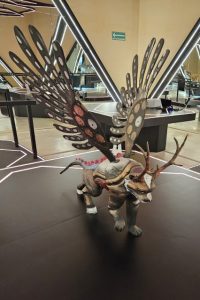We didn’t come to Chicxulub for lunch, of course. Sure, the restaurant was nice enough, the food, too, and the scenery entertaining, with pelicans providing for their own lunch – frequently diving vertically into the water, trying to catch whatever they eat.
But the real reason to come to Chicxulub is that here, allegedly, crashed a meteorite into the earth some 66 million years ago, ending about 75% of the life then existing. Mass extinction, it is called, and it has occurred more than once in the earth’s geological history. But this one, at the end of the Cretaceous period, is so much more alluring because it ended the life of the dinosaurs, too.
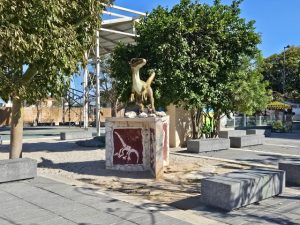
and this is the centre of the village, centre of the volcano, too, marked by a sculpture of … a dinosaur
Unfortunately, there is not much to see from the impact crater itself, which is buried under a kilometre of limestone, and is in any case for more than 50% offshore. But geodetic measurements do show a slight subsidence towards a supposed crater centre, confirmed by gravity measurements and other geophysical data. And that centre is in Chicxulub – Chicxulub Puerto, not the Pueblo -, coincidentally right in the middle of the town square. And Chicxulub would not be Chicxulub, if it wouldn’t make the most of its fame, although admittedly, not many of the attractions have anything to do with the meteorite impact. Rather, it is the dinosaurs that – understandingly – appeal to the imagination of the tourist. Several wall paintings, lots of different dinosaur sculptures, and a real Sendero Jurasico – ignoring the fact that the beginning of the Jurassic preceded the end of the Cretaceous by some 135 million years.
In nearby Progreso they also try to benefit from the impact fame. There is a real Museo del Meteorito, with a few samples of meteorites – probably not from the one that can be found at 1000 meters deep – and a selection of fossils, most if not all of them replicas, I think, from throughout the geological history (including trilobites, that died out at the end of the Permian, 252 million years ago, so completely irrelevant for this particular museum). Next in the museum is an artist impression, in the form of a film, of what the impact would have looked like. Hilarious, at one stage you see several tall dinosaurs just falling over after the meteorite has landed (first video, around 30 sec.), followed by lots of thunder and fire, of course. But most of the museum visit is, once more, dedicated to the dinosaurs, in the form of many moving models, shaking their heads and wagging their tales (second viseo). Altogether, far removed from any scientific reality. But that’s not what I came for, of course. I have just been to the most famous crater in the world, and that is enough for the – admittedly dormant – geologist in me.
and the next one:
https://youtu.be/ox3PnrBvHT0

